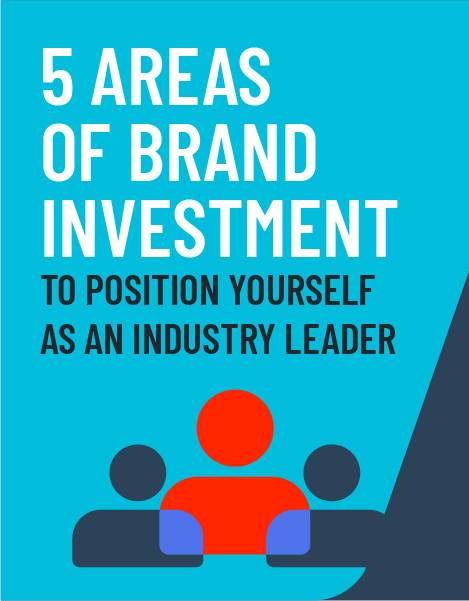What is employee experience and why is it important?

Whether you’re a startup fresh out of Series A or a Fortune 500 powerhouse, employee experience (Ex) is a crucial element of your brand. It ensures that your employees understand your organization’s purpose by aligning every aspect of their work and work environment with it. It provides a foundation that supports them in delivering their best work—in turn, supporting the brand and fulfilling its promise to customers.
The result is that your brand’s meaning is experienced uniformly—both internally and externally. That consistent experience continually reinforces itself through employees’ work (e.g., products and services, brand messaging) and their representation of the organization. Consistently delivering on a brand’s promise and across these varied interactions will foster that external belief.
After all, a company is made up of its people, and brands are what people say they are.
So, what do employees say about your brand? How do employees feel about the company from the moment they consider sending in their resume to their last day on the payroll?
Employee experience 101
Employee experience describes the all-encompassing journey your employees embark on as a part of your company, beginning when they first become aware of your organization as a prospective employer. The experiences employees have when interacting with your organization (especially once they go behind the scenes themselves) directly impact how they feel about it, approach their work and embody your brand as its representatives.
Employees are an organization’s greatest asset for achieving success, so they must ultimately comprise the most crucial group of brand believers to cultivate. But if what your brand stands for doesn’t permeate every facet of how you operate, employees will always be the first to know. Conversely, when employees understand and believe in their organization’s purpose, they perform at their best, advance the company’s purpose and generate brand belief among the customers they interact with.
Why is employee experience important?
The data doesn’t lie—employee experience matters to today’s workforce:
- Per Gallup, improving your employees’ connection with your company’s purpose by 10% correlates with decreasing turnover by 8.1% and increasing profits by 4.4%.
- U.S. workers who strongly identify with their employer’s values are 75 times more likely to be engaged at work.
- 77% of candidates consider company culture before accepting a job offer—and 56% value a good workplace culture above salary and benefits.
Simply put, when companies fail to foster employee belief in the organization’s purpose, it results in their being less likely to thrive, engage or emotionally invest in supporting it or your brand promise.
Employees are seeking meaning in their work. But if companies leave their employee experience or the development of their cultures to osmosis, their employees won’t work concertedly or collectively toward the same outcomes. Inconsistent interpretation of brand meaning leads to misalignments and competing goals and expectations, inhibiting employees from achieving their best work—for themselves or the organization.
Of course, employee experience is important for your bottom line, too. At a minimum, high turnover increases your overhead. But, more importantly, employee experience is closely correlated with customer experience because employees will carry their brand belief into everything they do in their work. Research shows that every 1-point increase in a brand’s Glassdoor rating is linked to a 1.3-point boost in customer satisfaction.
How to improve your employee experience
So, how do you make an employee experience plan that cultivates employee belief in the work they’re doing? Let’s break down three steps you can take to improve employee experience.
#1 Identify what you can control.
Employee experience is the culmination of all the little day-to-day interactions—where employees feel accepted, empowered and supported on the job. And organizations hold significant control over some of these elements. They can use the following as levers to develop the right employee experience or culture required for people to do their best work in support of the company’s purpose:
- Communications—How does your organization engage employees? A successful employee experience plan incorporates storytelling to inspire, educate and activate employees—helping them understand and embody their company’s values and key cultural tenets through the employee journey.
- Systems—What enterprise-wide programs and structures has your organization implemented to support the employee behaviors you want to see (e.g., how training and performance reviews are conducted)?
- Rituals—What “ceremonies” does your organization have to celebrate desired behaviors and met expectations?
- Cues—What visual elements help reinforce employee belief and engagement?
These elements help lay and reinforce the foundation that enables employees to thrive and support the organization’s purpose. And they must be in alignment with your brand. This is critical—efforts to improve employee experience need to be intentional and genuine. If you roll out a new employee experience plan that doesn’t match your company’s values in practice, your staff will see right through the facade.
#2 Investigate where employee experience isn’t aligned with your brand.
If your brand presents itself as being forward-thinking and cutting-edge, but your employees are still relying on legacy technologies to perform their tasks, how does that misalignment affect their perception of your brand?
Crafting the ideal employee experience begins with an internal audit of these types of misalignments. Start by considering employee experience the same way you would an omnichannel customer journey—with discovery aimed to craft every facet of your employee experience in consistent alignment with your brand strategy. This ensures that whenever and wherever employees interact with the organization through their work, the same brand elements and experiences are found.
Companies looking to improve their employee experience need to assess how small, everyday behaviors or processes (and the feelings associated with them) build up to create habits and general attitudes.
These everyday tasks are mission-critical. While you might only feel like you’re “doing business” when you land a big contract or successfully court a new investor, you’re also doing business during staff meetings, employee training sessions and project status check-ins.
There are a few ways you can collect useful evidence during the investigation phase:
- Assess the numbers—are your employees performing as well as you’d like? Which employee experience factors do you think are contributing?
- Ask your staff for honest feedback about your processes and policies. Did initial training burn them out? Were they oversold on a company culture that might not exist yet? They should be the focus of your efforts.
- Reach out to former staff who left on good terms. With the benefit of hindsight, they might have some ideas for improvement that would have impacted their retention.
#3 Make an intentional plan.
You have a list of priorities, helpful intel and possibly even a few early ideas for improvement. Now, create an intentional plan and start acting on it.
An intentional plan should have:
- Resources—Instead of telling your managers to create stronger bonds on their teams, give them tools, ideas, time and money to build those relationships. Leaving it up to them only ensures that you’ll be delivering as many employee experience variations as you have managers.
- Benchmarks—Set some quantitative and qualitative goals and work backward to make a plan that will help achieve them.
- Backup plans—If your original plan doesn’t produce the results you expected, go back to the drawing board. Creating an impactful, engaged workplace culture is all about finding what works (and what doesn’t work).
- Clear connections to your brand—Remember you only have one brand, so make sure the employee experiences you build are supporting it. With every program, incentive and investment you make to build your employee experience, make sure it is driving your organization’s purpose and expressing your brand’s attributes authentically.
Build high-performing teams with employee experience.
The development of the right employee experience is an essential element to the success of your business model—employees achieve their best work when the organization itself is aligned to support them in doing so.
In organizations where employees are too busy wading through awkward relationships with co-workers or trying hard to work through byzantine policies and procedures, they don’t have time to perform, grow and thrive. Instead, employees achieving their best, most productive work is contingent on the development of an intentional employee experience that grounds them in their important role and supports their work.
Focus on alignment with your cornerstone values, ask for feedback from your most important assets (your staff) and act on a plan with integrity.
Sources:
Forbes. Why 2022 Is the Year of Workplace Culture.
Gallup. To Get Your People’s Best Performance, Start With Purpose.
Business News Daily. A Positive Company Culture is a Top Priority for Job Seekers.
Qualtrics. What Is EX? Your ultimate Guide to Employee Experience.

